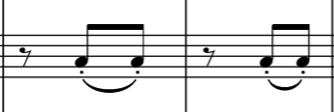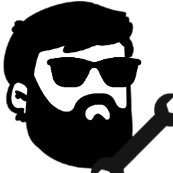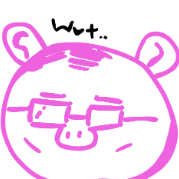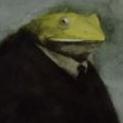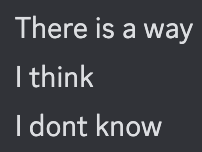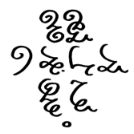Leaderboard
Popular Content
Showing content with the highest reputation since 06/05/2025 in all areas
-
4 points
-
Getting back into composition from a long hiatus, I decided to orchestrate a piano piece by Claude Debussy. The piece is a movement from his piano suite Estampes titled La Soireé dans Granade (Evening in Granada). I'm still not too familiar with Debussy's piano music as a whole, but this suite definitely piqued my interest in that genre. I wasn't aware at the time, but several high profiled figures have orchestrated this movement (and other movements of the suite), and I did avoid listening to them so I don't copy them. Link to the original piano composition: The audio quality is a little meh...this is the last piece I wrote before I switched out of Finale/Garritan to Dorico/NotePerformer. Any feedback is appreciated!3 points
-
3 points
-
Lately, I've been thinking and imagining how Ancient Greece was reinterpreted in Impressionism. And well, all of that inspired me to write something. The dawn is that moment before sunrise when there is already light. For a brief explanation of what resources I use: Aurora3 points
-
Thinking, "I should write a theme first and then a contrasting one," is exactly the sort of thinking about form that he is discussing. You sound like you are well on your way to thinking about the large scale issues with a piece, rather than just writing note by note. It sounds like he's talking about how beginning composers just sort of work from one note to the next without any rhyme or reason. There may be no theme at all, just a random succession of notes that they liked for five minutes straight. Everyone works one note to the next, but the more experience you have, the more you'll be thinking ahead about how to organize yourself in the choosing of those notes. Thinking, I have a fast section, so next I should have a slow one for contrast... that sort of thing. Or, I'm going to have range issues if I give this bit to that instrument without modulating. Do I want to modulate, or do I want to give it to a different instrument... And he wants to suggest some simpler exercises to get you started thinking about these sorts of things before you decide to write a whole symphony. Use fewer instruments. Write a short theme and see if you can turn it upside down. Practice writing a fugue. Also, Schoenberg is writing in a way that makes him sound like a big smarty pants so he can scare you into doing your homework, so don't be intimidated into a state of confusion, just do the exercises. (My best guess at what he was going for at any rate).3 points
-
Hi @Chemathmusician0510, I agree with @danishali903, the piano shouldn’t just repeat what the strings are playing, but instead have its own part. I wouldn’t go as far as calling the music basic since I think it does display some good chamber music part writing and counterpoint, but I may add more interaction between the instruments and allow other instruments to play the melodic role as well. The piece sounds quite Baroque for me even with those dissonance, because of the drive of the outer sections and the Trio sonata slow movement like middle section. Thx for sharing! Henry2 points
-
Firstly, I think the audio rendering doesn't do this piece justice. Everything sounds too muddy, and I can barely hear the 2nd violin and viola parts coming through. As to the String Quartet vs Piano Quintet, I don't see the value of having a piano added since it seems to be doubling what's going on in the strings. Leaving this as a string quartet piece would be more logical. Your string writing isn't bad...but it's very "basic". Each instrument/part seems to have a pre-defined range, and the music rarely goes in and out of that range. Maybe throw the melody to the cellist in its higher ranges, or have the viola play something other than this accompaniment role: I also think the transition to the trio section (somewhere around bars 80-82) can be a little more developed, as the trio (bar 83) is VERY different from what came before....just a bit jarring. It might work better, and be a little more interesting, to have that section in a major key. Otherwise, a bit more counterpoint material can help as well. It just sounds very homophonic at the moment. Last comment: The outer sections could use dynamic and phrasing marks.2 points
-
I am also working on a set of variations and mash-ups on themes not written by me (from a famous videogame). I am using so many themes at once that I am also feeling unmotivated lately to work on it. It seems like one of those never-ending snowballing out of control projects. I hope that I'll finish at least one part of it. I think because of my ginormous orchestral project, the next thing I'll want to write is a piece for 1 monophonic solo instrument accompanied by 1 polyphonic instrument (like the Dreamscapes contest rules). It would be a nice change of pace. And if I manage to write something "dreamy" then it will be all the more interesting. Besides that I was thinking of writing my own variations of more of the themes from the "Bits to Bangers" competition, since I already did the "Harvest Moon" Piano Quintet. I think I majorly prefer working on previously written video game themes, and if not that, then I prefer for my own music to retain a VGM style or media purpose to it somehow.2 points
-
Am working on an Orchestral Variation on @PeterthePapercomPoser's themes. That's going to be my first orchestral piece and also first variation piece. One third of it has been finished but recently just sort oflosing the motivation a bit. I wanna write 2 serial piano pieces, and my life time goal would be to write a Choral Symphony using Chinese Poet's Du Fu's poems. Maybe I feel too tired working on many music these few months. Finishing a Piano Sonata, my dream the String Sextet which I feel so grateful to have finished, a Violin Sonata and a few piano pieces, maybe it's time for me to slow my pace down and absorb more music again. Henry2 points
-
Not sure if this is the right place for this post, but I came across something, quite simple but still fun. Was browsing youtube and stumbled upon a video. At the very beginning, the creator presented a 4 bar line of a Violin melody. (I've altered it a slight bit to make it a tiny bit more interesting. the original challenge melody reused the 1st measure, except with the same 4 32nd notes you see at the end of bar 3. I elected to simply change it to Gb, rather than staying on the G. I also included an ending 1 and a fine measure to sort of round it out a bit more. Here is the Challenge Melody): The instrumentation to be used for this challenge includes Vln. 1 & 2, Viola, and Cello. 4 Staves, with Vln. 1 already written for ya. Just curious to see what everyone else comes up with 🙂 Here is mine! I'm not a virtuoso or a master so mine will probably pale in comparison to some of yours. Lets see it! Harmony Challenge.mp32 points
-
Hi to everyone. This week I've been working on an exercise to orchestrate Debussy's Prelude No.6 from Book 1. I came up with two versions, one with a very restricted instrumentation, and the other with a larger ensemble. Interested to know which you think works best? The final bass dyad was very problematic, due to its extreme low pitch. It sounded too intrusive and twangy in the harp, and seemed off-pitch in the double-bass, with a horrible grating timbre. Eventually I decided to remove the lowest note altogether in the version with restricted instrumentation, and have the upper note pizz. instead of arco.2 points
-
Hi everyone! This is my first piece for full symphony orchestra, first post, (and my first "completed" composition: a lot of firsts), and I'm definitely still learning how to orchestrate better, create nicer textures, and pace my compositions/develop melodies (all for fun, I just like listening to music and playing a little bit haha, so I don't have any formal composition background). This piece was inspired by various Romantic composers (with quotes from my 3 favorite symphonies--one is really obvious but I'm interested to see if others will recognize the snippets I tried to include) and includes two central themes. I'm open to all the advice I can get! Thanks for your time! PS. my score is really chaotic and I still need to clean up all the accidentals and stuff.2 points
-
Nice piece! It makes me think of the C418 minecraft soundtrack. Yes, it does feel static, but personally I don't mind that at all. Although the best moments are when you break that staticness, like in bar 30-something with the sixtuplet. I like how you - when using the same chord for two successive bars - thin out / change the texture. Well done! Kind regards, Marius2 points
-
Hello @A Ko and welcome to the forum! It's so fun that you snuck in some themes from other composers' works! At around 4:10 it sounds like you're quoting Mahler - Symphony 4 or 5 perhaps? It's amazing that your first finished composition is this long and for orchestra - congrats! Incorporating other composers' melodies in your own works smoothly and seamlessly is quite a difficult endeavor and it gives the listeners a fun little Easter egg hunt to go on - very clever idea to involve the listener in the listening process in yet another additional way! Thanks for sharing!2 points
-
2 points
-
Hi! I'm new as well. I really like your piece - it has wonderful harmonic turns, it feels very well thought out. I especially like the really smooth key changes, and the part after b.24. The melodies are less recognisable, but I think it kinda suits the style. I think the playability is something you could work on (if you ever want a real orchestra to play it). First of all I'd try to change the key: probably to Eb and D instead of Db and C. You'll run into range issues doing that, but no-one likes playing with 5 flats. Whereas 3 flats is really nice for the winds and two sharps are nice for strings. Furthermore you might want to keep in mind that ppl need to breathe.. I'm mostly talking about the last note in the horns - I think it's possible, but it is a veeeery long note and also playing that pianissimo will only make it worse - you risk the sound getting quite shakey bc they'll be out of breath, and that will be very audible because no-one else is playing. Also the accel. from b.30 onward will be difficult to keep consistent. When performed it won't be as gradual as when done by a computer. Idem for other long gradual tempo changes. But for a professional orchestra these things would be entirely possible. And musically it's really good. I should say I don't have much experience reading scores or conducting so I don't know if this would be balanced at all - although I think so. My favourite moment is b.55 - really nice melody there! Kind regards Marius P.S.: Gershwin was really obvious. I think I heard some Sibelius 2 (mvt. 4) with that syncopated background and rising melody, but I'm not really sure. I didn't catch the third quote.2 points
-
Henry, I apologize for taking so long to reply to another great piece of yours. After many repeated listenings, this is clearly a programmatic piece in my opinion. There is anguish, anxiety and a false sense of repose. The juxtaposition between light and heavy themes, minor and major works effectively to convey the message of your piece. I have a few reservations about the random pauses that come after the blues. I feel they interrupt the flow at times, and as for the blues itself I think the f double sharp in the theme would sound better if it were changed to a g sharp. Those are just my thoughts tho; the climax and the aftermath of it is quite well done. I am glad you were able to find peace and transcendence in your sextet.2 points
-
Oh hey I like the contrabassoon idea, it's so rich in the lower register. Perhaps the easiest and right solution. Would it be so weird to have the piano with the orchestration? You mentioned harp, percussion, bells, etc., maybe the piano (or synth?) could be used as an accent/effect instrument in the ensemble. It could play the low notes of the final bass dyad in question, but just a random thought. Orchestration is really cool, and it helps I love Debussy haha. Nice work!2 points
-
2 points
-
Alex - overall both are very good orchestrations of the piano work. After listening to the piano work, I found, I missed the resonance of the lower notes vibrating (pedal). I'm not sure how to reproduce this quality in the lower winds and/or lower strings etc. Mark2 points
-
Hi @kaiyunmusic! Really like this vibraphone like electric piano piece. I agree with Peter, the piece is more in 6/8 than in 3/4 since the dotted crotchet is the basic unit here, rather than the crotchet. Nonetheless, I enjoy very much the serene mood here. Thx for sharing! Henry2 points
-
Hello @Vladisove! Welcome to the forum! I didn’t read your post at first, but I recognise the opening of the 1st piece as really Sibelius like with that particular Scandinavian colour, like use of harp and pizzicato and winds in high register. The thick brass in 1:50 has reminiscence of Wagner before returning to Sibelius Woodwind. Really love your woodwind usage here, particularly the English Horn. The D minor 2nd piece is really ice-cold just like Sibelius’s work. That English Horn/Oboe entry is amazing for portraying the bitter and cold mood. I love the vocal too, even tho I don’t know the lyrics. The ponticello tremolo opening is captivating. I love these mood here, though I think for a 10 minute piece it can introduce more memorable Melodies to sustain the interest throughout the piece. However I love the ending very much especially it ends in my favourite C sharp minor and F sharp minor. I love these pieces and they are amazing especially when you don’t receive formal music education. Maybe for me I would love to have more contrasting mood in this suite, since they are more or less in slower tempo and minor key, portraying the cold atmosphere as in Sibelius’s work. Thanks for joining and sharing your work! Remember to hit the like button under my comment so that we know you like my comment haha! Henry2 points
-
Thank you for your instant response! As I am new on YC - it is like attending a house music concert for the first time where all other guests are still unknown - it is very pleasant to be welcomed warmly by the host (according to my reading of a number of the latest posts I have noticed that you are very active in replying to new submissions and as you are one of the „Moderators“, I consider that you are one of the „hosts“ among the YT community). I will take a more thorough look at your profound comments concerning the composition of my fugue as soon as possible. The applause at the end - I know it's a bit embarrassing, but I added it for technical reasons, because I often had the problem that videos on iOS devices were cut off when there was only silence at the end, and one wants to hear of cause the final chord after all. You have recommended to follow @Fugax Contrapunctus. Interestingly, I’m already a (still silent) follower of him on YouTube and I found the YC website only due to he has linked it in its YouTube profile. I’ll watch his fugues (an your own, linked one) in the next time a bit more thoroughly to be able to give a reply, too. Greetings from Wieland2 points
-
A new poetry from the same Laforgue I can post the poem here, which is a beautiful black diamond (an automatic translation but quite close to the meaning) As always at Laforgue, irony, tenderness, idleness of an impossible platonic love We know that he loved a young Englishwoman with no return, and I think it was she who inspired him his most beautiful pages, here in the evening of his short life. Thank you for your reviews and comments! Ah! tonight, my heart feels sick, my heart is with the Moon! O veils of silence, spread out your still lagoons; O rooftops, terraces, basins, loosened necklaces Of pearls, tombs, lilies, grieving cats — give praise To the Moon, our Mistress to all, in her glory: She is the Host! and silence is her ciborium! Ah! how good it feels, oh! so good and sweet, in the halo Of mourning around this finest diamond’s glow! O Moon, you may find me a bit romantic, But tell me — now and then, wouldn’t it be frantic To think — just between us, and only if you please — That I could be your Columbus, on my knees? Well, let’s not speak of that; let’s chant the midnight rite, Preserved in alcohol, steeped in your delights. Slowing down towards us, O weary City, Fibrous cell with broken organs, withered pity! Remember the centaurs, the cities now erased, Palmyra, and the snub-nosed sphinxes of Thebes the chaste; And what Gomorrah, beneath your Lethe lake, Hides catacombs in honor of barren Astarte’s sake! And how mankind, with his “I love you” clichés, Is much too anthropomorphic in his ways, And knows only how to muddle through his days With hellos and goodbyes while twisting love his way. — Ah! As I was saying, and more than once or twice, That my heart is sick — my heart is with the Moon, precise.2 points
-
Hi @BipolarComposer! I really wanted to try and give you a constructive critique for this one. I think there are many pros to this piece: It has a mysterious and dance-like feel (especially with the percussion). The orchestration is differentiated and you achieve some nice contrasts! The melody is harmonized in very interesting ways including doublings at intervals that are different from the expected 3rds and 6ths, sometimes including whole chords as a doubling, other times 4ths and 5ths. Some of the cons (imo): The orchestration is sometimes very thin and at other times very thick and bombastic with seemingly no middle ground. Some of the instruments aren't being used very idiomatically (such as the pizzicato strings). The piece sounds kind of same-y dynamically and intensity wise. The dynamics and intensity only change by adding or removing instruments rather than creating crescendi or decrescendi. (Not sure this really applies after my 3rd listening.) The tempo could also stand from accelerandi or ritardandi in choice spots to help the music arrive at a point of higher intensity or recede from an intense section in a kind of denouement. The piece lacks to me the lucidity of say, a Beethoven Symphony movement. The melody seems to meander here and there without unity and relatedness. I think the go-to example for how intense a melody can be if it's masterfully unified is Beethoven's Symphony No. 5 1st movement. He builds the whole movement out of that single motif. Even the longer leading melodic lines are constructed in fragments out of that motif, blurring the line between motivic and thematic composition. This piece in comparison, sounds at times very leisurely at best and meandering at worst because it lacks that drive and unity. The ending as well is kind of a throw-away because it doesn't feel like the music has taken the listener on a journey and so the piece ends very underwhelmingly. The formal sections of the piece seem to all be in the same key and so kind of blend together into one long section despite the many contrasts you introduce. That's my critique, although of course I really enjoyed the piece! Thanks for sharing.2 points
-
Heh thought you'd notice! I really want to listen to you guys' pieces since you and @Henry Ng Tsz Kiu has been commenting constantly on my pieces and others, and I've only listened to a handful of you guys'. I've honestly been avoiding listening to this piece cus I had thought that there's a lot that I could change and all that. For example, I'd probably tone down the flute's high notes since it's so frequent and a reply here has pointed out that too. But honestly, it ain't that bad lmao. And hey, I wouldn't mind a concerto arrangement, but I think this chamber instrumentation suits it more. You're exactly right. And that's exactly why some of my older scores are just atrocious with pitch spelling, cus I was a dummy and had not figured how they worked yet, even here too in some places! It is one of the reason why I want to revise some of my older pieces. me when sleigh bells It's "Carol of the Bells." The first theme is loosely based on it, the sequence starting from b.122 has the rhythm, and the actual quote appears in b.193 Thank you for all the kind words!2 points
-
Even though my application is still under development, the idea is that Music Jotter can translate the AI text notation from ChatGPT or Gemini to actual notes. This saves the end user the pain of having to notate the AI's response output manually. As far as I know, there are no other tools that can do this at the moment. So you literally are at the only place that can give you somewhat of what you are asking for. The problem, is that ChatGPT and Gemini are not trained on classical music, they are all purpose llms. I would love nothing more than to develop my own llm down the line, and train it on Chopin, Mozart, Beethoven, and other music, but hey, maybe if I can convince some AI investors down the line that we need this technology, this can be doable! But as of this moment, you can describe music and get textual output (even fun chord progressions!), where Music Jotter will convert that textual output into playback sheet music. My latest 2 videos on my channel are dedicated to this.2 points
-
Hello @schedevrant and welcome to the forum! I am not too familiar with chatgpt, deepseek, or grok or any other AI tools for that matter.. but the owner of this forum @chopin is developing a notation software called Music Jotter that is able to take data generated by AI tools and create music. He's showed off the capabilities of AI tools and Music Jotter and what they can do on his YouTube channel - Can ChatGPT compose like Chopin? From what I understand, since ChatGPT and Gemini can understand midi data you feed it and output midi data - you can import it into notation programs and see the notes etc. That's just my understanding of the AI capabilities though. Can you maybe talk more about the difficulties you encountered in realising midi data output from AI tools and opening them in Musescore or other notation programs? They can export their files as midi even if PDF, jpg or mp3 isn't a format that ChatGPT understands, right? And thanks for asking! I'm sure many people will find this topic useful. And hopefully some of what I said will be helpful!2 points
-
Hello @L.S Barros and welcome to the forum! Nice sonata! I assume (you can correct me if I'm wrong) that this is a sonata de camera? I love the constant exchange between major and minor mode that is so characteristic of music in this style, with all its Picardy 3rds (as I learned on your server). I do wonder how it would sound if you tried reversing the pattern - like, what if a phrase in a major mode ended on a minor chord? Or maybe you or some other Baroque-style composer already do this? I get the sense that this is a dance and is a piece that could easily be danced to in real life rather than just being a dance form that evolved out of an actual dance but is meant to be just an instrumental (which is why I'm guessing that this is a sonata de camera). Thanks for sharing and I hope you find this forum to be a good platform to share more of your works and participate by listening to other composers' works and possibly reviewing them! Kind regards,2 points
-
Hey! I made this Early baroque sonata for 3 sackbuts, 2 violins and B.C. Its already my 7th sonata i have made and i am really proud of it.1 point
-
@Artdreamer77 The user edited out his content so the conversation has holes. The user also changed the name of the topic to ".". I am going to close this topic to further replies.1 point
-
Hi Luis, I've become very interested in music from Antiquity, like the Seikilos Epitaph, and Hurrian Hymn to Nikkal. I like the effort you've gone to here with retuning your scale. Octave species used in ancient music seems to be a very rich subject I've yet to fully understand! I sometimes wish film composers would employ the techniques you've used here, so they can create a more authentic musical language to reflect the ancient world. Seikilos epitaph Seikilos stele with poetry and musical notation Type Stele Material Marble Writing Koine Greek Created c. 1st or 2nd century AD, Tralles, Asia Minor Discovered 1883 Discovered by W. M. Ramsay Present location National Museum of Denmark1 point
-
I recently bought Fundamentals of Musical Composition by Arnold Schoenberg and I am excited to be reading it as it is the first real reading I am doing on musical composition. In the first chapter he writes the following: "A composer does not, of course, add bit by bit, as a child does in building with wooden blocks. He conceives the entire composition as a spontaneous vision. Then he proceeds, like Michelangelo who chiselled his Moses out of the marble without sketches, complete in every detail, thus directly forming his material. "No beginner is capable of envisaging a composition in its entirety; hence he must proceed gradually, from the simpler to the more complex. Simplified practice forms, which do not always correspond to art forms, help a student acquire a sense of form and a knowledge of the essentials of construction. It will be useful to start by building musical blocks and connecting them intelligently." My question is how a composer can in their vision of the composition, imagine the entirety of the form before composing even a single motive. Sure, before beginning a composition, the composer feels the ineffable essence of what they wish to express in their composition, but the form is part of that too? I was surprised to read that a composer does not add bit by bit, since it seems natural to compose by writing a theme, and then a contrasting one. I have not, though, had much success doing so, so I guess I must begin small and internalize form as a begin composing small forms for practice. I may be misunderstanding something, but reading this seemed like a reality check that I was thinking of form wrong as a composer. Or maybe this "spontaneous vision" of the form is something only the greatest of the great composers can master. I don't know; I'm a beginner.1 point
-
Frankly, I would not take anything Arnie said seriously and would toss his book in the trash, where his "music" belongs as well. Perhaps set fire to it. It is also blatantly false when he says that "No beginner is capable of envisaging a composition in its entirety". Of course they can. Even laypeople can. They are capable of "envisaging" it, but that is different from "realizing" it entirely. The truth is that even if you plan out a structure or form from the get go, pieces tend to undergo metamorphosis as you actually work on them. The music reveals things to you that may not have come to you while you "envisaged" it and every piece is different. On some, you might have thought of a form you want beforehand and you wind up following it exactly. On others, you might realize partway through that actually, it would better if this "B" section didn't repeat after all and you have a better idea. And yes, it can even unfurl like a tapestry on a one-note-to-the-next basis. As an example, on my last album, some pieces I had a very clear picture of how they would be laid out before I even sat down to work on them. But on others, I did not. On one track I wrote, all I knew for certain was that I wanted it to start with some soft horns, and end with a big march that fades out into percussion similar to "The Flag Parade" by John Williams. I wound up having to change the ending because the company I wrote the album for required every track to end on a hit, but everything between the intro and ending was up in the air. It wound being the most popular and best-selling piece on the album — and is also my favorite piece on it.1 point
-
A great work (movement). The shift from romantic to jazz language is quite surprising, but I think that transition is very natural and adds a lot of value. You don't notice that it moves from one place to another, musically speaking.1 point
-
I've actually been thinking about this a lot lately. I was studying the film scores and other orchestral recordings of the '90s in particular and trying to figure out, aside from things like tape, what made them sound the way they do. In researching it, I found that in the way it was recorded, mostly owing to technology of the time, is that the stereo field actually has a strong center. I don't think one gets the best results by trying to pan the orchestra precisely to where they would sit in real life, because it creates an image that is just too wide for a stereo recording. Which is a 2 dimensional thing, unlike the 3D sound you would experience if you were actually seated in a hall. It's like bass. As you mentioned, the low strings being off center feels wrong on a recording. I usually use a mono summing plugin to put the basses right in the middle. That's not "realistic", but it's what works for a recording. What you can do, is pan the orchestra basically according to its seating, but then use a mono plugin to slightly reduce the overall stere field by around 15% or so. You can still tell that the instruments are panned, but they all have more of a center image than they do "out of the box".1 point
-
Hey @Henry Ng Tsz Kiu! I just thought I'd have another go at some random impressions to your random sounding 3rd movement! LoL I feel like measures 8 - 10 should be more different sounding rhythmically from 11 - 12. Right now they sound really similar even though the rhythms are clearly supposed to be different, which I think is just a result of your lazy right hand! LoL The chord in measures 16 - 18 sound really muddy and thick in the bass range (which is very Beethovenian of you!). I am not a particular fan of that aspect of both yours and Beethoven's music though. I like the confused allusion you make at measure 20 to one of the other movements of this sonata (I don't remember which right now and I'm too lazy to check LoL). It does really sound strange and confused like the music momentarily doesn't know where it's going. I like how you invert the main Allegro theme in the bass in measure 29. Cool canonic imitation! I thought the transition at measure 38 could have been milked further for a longer amount of time to give a more complete sense of transition (especially since you had just finished a 12 bar phrase and keeping the number of bars even numbered in each phrase might have been more appropriate here). I like the transition to a Revolutionary Etude style of accompaniment in measure 39! But in your favorite key of C# minor instead of C minor as in Chopin's piece, which I think makes it a little bit more difficult to play. Nice Locrian inflection at bar 47 which also seems like an allusion to the Revolutionary Etude since Chopin kind of does the same thing with the harmony at a certain place. I like how you gradually foreshadow the Nihilistically Scherzando section in the crazy part (63 - 71). I totally neglected to realize and mention how the Scherzando is both a 12-bar blues and includes a melody from somewhere before interweaving in between the crazy dotted rhythms! The constant juxtapositions between quick Allegro Agitato phrases and slow Adagio question-like phrase derived from another movement are really musically interesting and dramatic! I don't really feel like the transition at measure 183 does a good job at preparing the listener for the beautiful sweet appassionato melody you expose in the next bar (which I know is another quote of a melody from one of the other movements but I don't know which LoL). Nice canonic alternation between the right and left hand playing the melody in the appassionato section. I know you consider bars 221 - 241 as the most impressive part of this movement, but I don't really like it that much personally. I know it must have been difficult to play and it's a great technical feat to be able to execute! But musically it just doesn't do it for me LoL. I like how the recapitulation creates another juxtaposition between the crazy 12-bar blues material and the Adagio allusion. Are the pentatonic scales the quote of your Sextet? I think it's note entirely out of place in this piece. Nice ending - it sounds quite conclusively finished after a monumental work. Bravo! Thanks for sharing!1 point
-
1 point
-
This is a dreamy and delightful piece, which benefits greatly from the sound of the electric piano, Rhodes, or whatever.1 point
-
1 point
-
1 point
-
Unable to sleep once again, this early morning I have managed to compose a Late Romantic-style overture for string orchestra. This piece's overall character stems from the metaphor of a harsh storm passing, as hinted by the German title shown in the score: Der abflauende Sturm. Albeit short, compared to my usual standards it is both quite emotional and reflective simultaneously as I tried to pour my feelings on the current state of affairs in my life into music, and I must say, in terms of either harmonic variety and dynamic expression, I think it turned out better than I could have ever imagined, especially considering the fact this work and its idiosyncrasies are pretty far removed from my usual compositional style. Enjoy! YouTube video link:1 point
-
How many takes do you need to get a recording of this length to your satisfaction? Bravo! I really enjoyed the transition at bar 63. (The "crazy" section). It works well as a bridge between the classical beginning and later jazz styles. I also particularly enjoyed the 130s (Allegro agitato) where you switched back in the other direction. And I heartily agree with Chopin's comment above about the value of structure and storytelling in music. To tackle such a lengthy project that becomes perhaps the most important concern. How can the same material be brought back and developed in a way that tells a story? You are further along on that journey than I am! Well done!1 point
-
Thanks! But it actually does not have a form, early baroque sonatas does not have a form at all, it was more based in sections, and it was one single movement, but in those different sections there could be different time signatures, rhythms, modes, tempi... So its a very free style. And also we don't work with phrases, more like motifs, and the imitation and developing of those. About the reverse chord idea its already very much common in all the early baroque repertoire and also renaissance, the only thing about picardy thirds is that they are basically optional now days, but back in the renaissance and baroque it was basically obligatory, because the most common temperament in that time were Meantone temperaments, which favor pure major thirds and sixths. Because of that most of the cadences are indeed using it, but its not really obligatory, you can have an entire piece without any picardy third, and to standarts of that time period it would be completely fine. The reason i use them is because they were obviously more common than the normal minor chords and because they sound nicer to the ears, since the melodic line of the voice which creates the major third in the end is almost like sweetened, and its much easier to sing than the otherwise natural interval.1 point
-
Thank you, I'll take a look at this to see what I can do. 😃1 point
-
Hey @Krisp! Sorry for a very belated review. I only remember to review this wonderful piece of music until I see your name on the member list! I love the 5/8 time signature very much, in a sense an omen to signify the premature death of the poet with the rushing rhythm., but also well fit to the poem’s subject of chasing a girl! Your modulation is always wonderful, I love your modulation in b.30 to F sharp minor very much, reminds me a lot of Schubert and Schumann. The 2nd stanza begins will a mellow E major and a soft tone of your voice, matching very well to portray to girl’s beauty. And the hunger for sex is really showed in the next stanza with those forceful chord, signifying the uncontrollable Id and Libido. The cool down and then arousal of sex desire, then the breakdown is so fascinating. Your music is always full of content. I can’t imagine in just 2 minutes you already told us a great poem with all those dramas and structure. Very fascinating to listen to, and thx always for your sharing! Henry1 point
-
A religious motet I began writing this afternoon and have finished composing in under five hours. I didn't initially think of the text when I first started, as is usually customary for me, but instead found the rhythms suitable for the text afterwards, and as such, took it from the passage of the Vulgate where the crucifixion of Christ under the connivence of Pontius Pilatus is mentioned, and then added a a reference to His resurrection at the end. Admittedly, this motet would have been more suitable for Late Easter, but alas, I guess only now have I managed to compose anything of the sort. Enjoy! YouTube video link:1 point
-
It kind of depends for me on exactly what it is. In many instances, I like hearing a performance come back from live players and the little nuances that make their interpretation unique. However, I will say that it can be frustrating working with musicians with pop and jazz backgrounds. They're not so used to part-writing and often don't read sheet music. Their music is often much more chord + melody based and improvisational, so they often think that the pitches I've written are merely guidelines when they are in fact deliberately chosen because of how they will work vertically, as a unit, with other lines that occur at the same time, and they struggle to understand why them changing the melody the way they have messes up the piece.1 point
-
What a delightful piece! I especially like your oboe melody in bars 30-35, and the false ending on page 12. The alternation between arco and pizz in the strings is nice too.1 point


.thumb.png.8b5b433a341551e913a34392660bc95b.png)





